From nescitech.org:
ONLINE COURSE – ADVANCED LEVEL – AE LICENSE
This ONLINE ham radio license course will get you ready to take the Ham Radio AMATEUR EXTRA license exam, the THIRD of three certification levels. Geared toward adults, as well as junior high, high school, and home-school students. Yes, we give online ham radio exams, too! (See below)
This is a FULL course taught by a 40-yr veteran teacher, not a discussion group or video service. You will learn much more than just watching a video or buying a book. You get a full 24 hours of instruction over eight 3-hour classes. Take the course from anywhere – it’s ONLINE!
Topics range from the science of radio electronics to the FCC rules governing the radio spectrum. Recommended text: ARRL Extra Class License Manual, 12th edition, for exams through June 30, 2024, (purchase on ARRL website). Regular practice and study is necessary to get the best results from this course.
NOTE: You MUST have a thorough understanding of the Technician and General level material before taking this course. If you are already a licensed General but have been away from radio for a while, you may request to audit (at half price) one of our Tech and General courses to catch up.
Amateur radio (or “ham radio”) is used by people all over the world to communicate over radio waves. Some people use ham radio for emergency preparedness, to provide communications support for community events, to report on severe weather and natural disasters, as a social activity, and even occasionally to contact crew members on the International Space Station!
2022 ONLINE HAM RADIO COURSE FOR AMATEUR EXTRA LICENSE
Class Rotation: Classes are taught almost every Sunday evening and repeat every 8 weeks.
Because the order of topics is less important at the Extra level, you may jump into the sequence at certain start points* and take 8 classes to cover all 10 of the question pool topics.
*Starting Sun Mar 13, 7-10pm Eastern – 8 classes 1,2,3,4,5,6,7,8
Continuing Sun Mar 20, 7-10pm Eastern – class 2
Continuing Sun Mar 27, 7-10pm Eastern – class 3
*Starting Sun Apr 3, 7-10pm Eastern – 8 classes 4,5,6,7,8,1,2,3
Continuing Sun Apr 10, 7-10pm Eastern – classes 5
*Starting Sun Apr 17, 7-10pm Eastern – 8 classes 6,7,8,1,2,3,4,5
Continuing Sun Apr 24, 7-10pm Eastern – classes 7
Continuing Sun May 1, 7-10pm Eastern – classes 8
*Starting Sun May 15, 7-10pm Eastern – 8 classes 1,2,3,4,5,6,7,8
Continuing Sun May 22, 7-10pm Eastern – class 2
Continuing Sun May 29, 7-10pm Eastern – class 3
*Starting Sun June 5, 7-10pm Eastern – 8 classes 4,5,6,7,8,1,2,3
Continuing Sun June 12, 7-10pm Eastern – classes 5
*Starting Sun June 19, 7-10pm Eastern – 8 classes 6,7,8,1,2,3,4,5
Continuing Sun June 26, 7-10pm Eastern – classes 7
Continuing Sun July 3, 7-10pm Eastern – classes 8
*Starting Sun July 24, 7-10pm Eastern – 8 classes 1,2,3,4,5,6,7,8
Continuing Sun July 31, 7-10pm Eastern – class 2
Continuing Sun Aug 7, 7-10pm Eastern – class 3
*Starting Sun Aug 14, 7-10pm Eastern – 8 classes 4,5,6,7,8,1,2,3
Continuing Sun Aug 21, 7-10pm Eastern – class 5
*Starting Sun Aug 28, 7-10pm Eastern – 8 classes 6,7,8,1,2,3,4,5
Continuing Sun Sep 4, 7-10pm Eastern – class 7
Continuing Sun Sep 11, 7-10pm Eastern – class 8
*Starting Sun Oct 2, 7-10pm Eastern – 8 classes 1,2,3,4,5,6,7,8
Continuing Sun Oct 9, 7-10pm Eastern – class 2
Continuing Sun Oct 16, 7-10pm Eastern – class 3
*Starting Sun Oct 23, 7-10pm Eastern – 8 classes 4,5,6,7,8,1,2,3
Continuing Sun Oct 30, 7-10pm Eastern – class 5
*Starting Sun Nov 6, 7-10pm Eastern – 8 classes 6,7,8,1,2,3,4,5
Continuing Sun Nov 13, 7-10pm Eastern – class 7
Continuing Sun Nov 20, 7-10pm Eastern – class 8
etc.
Included with course: You will get downloadable lecture study guides and charts, FREE access to our weekly Online Radio Shop Talk sessions, FREE enrollment in any of our Morse Code classes, and a guest pass to the Sci-Tech Radio Rooms and online radio club meetings for 3 months.
Family Free: Additional members of the same family may join this course at no extra charge, if sharing one computer and zoom screen.
System Requirements: Computer or Chromebook capable of running ZOOM Meeting, either by Zoom app or through a web browser, a web camera/mic, and a printer.
Zoom Link: Approximately 2 days before the session begins you will receive an email with instructions to access the course details, documents, and Zoom link. If you don’t see the email, check your spam filter. If you still don’t see it, call or email us.
Please be aware of our Cancellation and Refund Policies. For questions, e-mail info@nescitech.org or call 508-720-4179.
LICENSE EXAMS
YES, our exam team is authorized to give ONLINE exams, so you can schedule your FCC AMATEUR EXTRA exam within a few days of finishing the course. Note that we must collect the standard $15 exam fee for the ARRL VEC separately. (Fee is $15 across the country.)
We administer ham radio exams both online and in-person, having proctored nearly 2,000 exams over the past decade. We’ve taught amateur radio classes for over 15 years with tremendous success. Hundreds of people have taken our classes with 99% having passed the exam to become licensed operators. We offer classes for all three levels of ham radio licenses: Technician, General, Amateur Extra, as well as Morse Code.
[To register: <https://nescitech.org/shop/online-license-course-extra/>]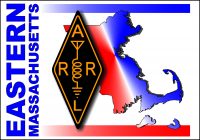

 The Northeastern University Wireless Club is hosting a special meeting with the AeroNU Project Horizon project on November 3, 2022 at 7 p.m. in 503 Hayden (club space).
The Northeastern University Wireless Club is hosting a special meeting with the AeroNU Project Horizon project on November 3, 2022 at 7 p.m. in 503 Hayden (club space). W1STR will be open and operating School Club Roundup on Thursday [October 20, 2022] from 7 pm to 9 pm and Friday [October 21, 2022] 6 pm to 8 pm, all are welcome to come and operate. New hams, youth, and anyone interested in ham radio will be able to operate this event on HF.
W1STR will be open and operating School Club Roundup on Thursday [October 20, 2022] from 7 pm to 9 pm and Friday [October 21, 2022] 6 pm to 8 pm, all are welcome to come and operate. New hams, youth, and anyone interested in ham radio will be able to operate this event on HF.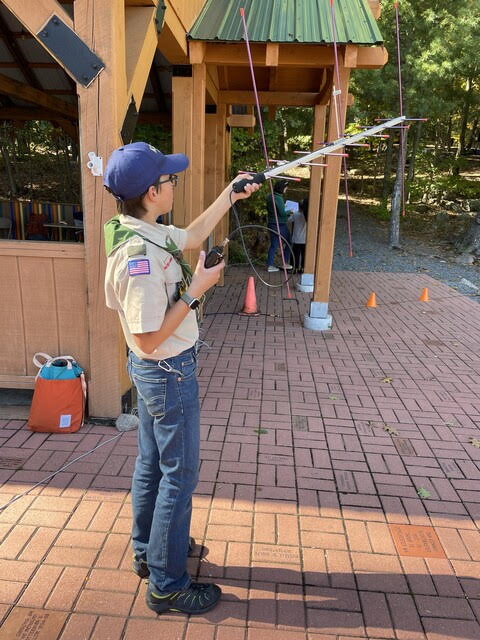
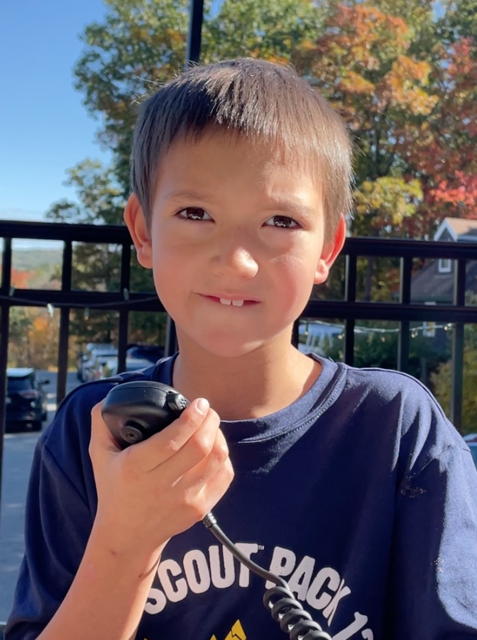
 Andy Stewart, KB1OIQ, is hosting Scouts for Jamboree On The Air on October 15 at his Westford QTH.
Andy Stewart, KB1OIQ, is hosting Scouts for Jamboree On The Air on October 15 at his Westford QTH.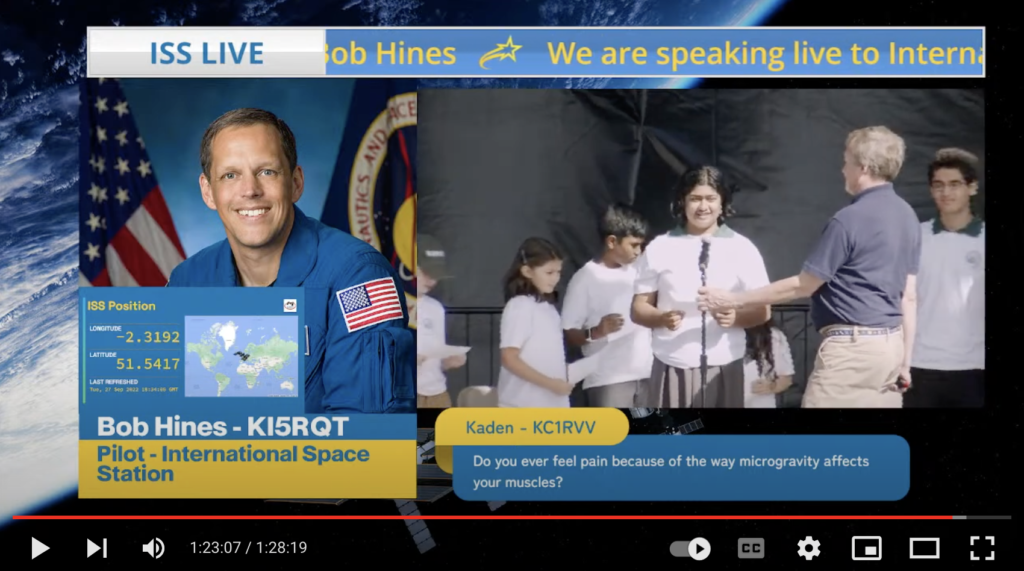

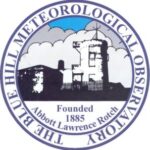 Tom Ulrich, KC1OCY, writes on the Boston Amateur Radio Club mailing list:
Tom Ulrich, KC1OCY, writes on the Boston Amateur Radio Club mailing list: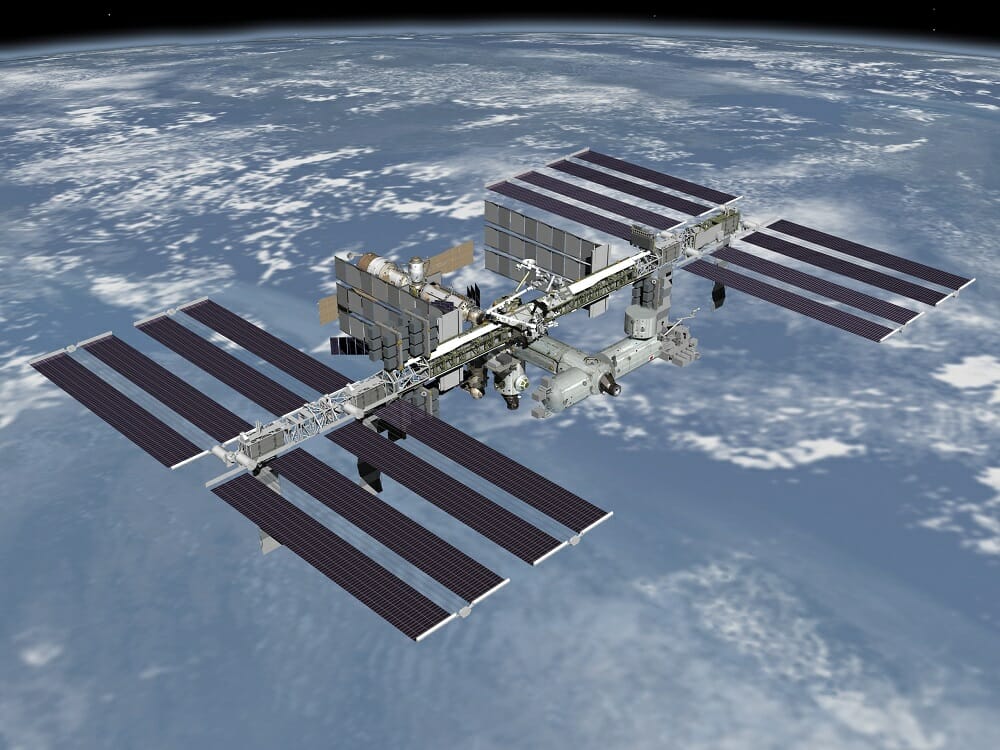
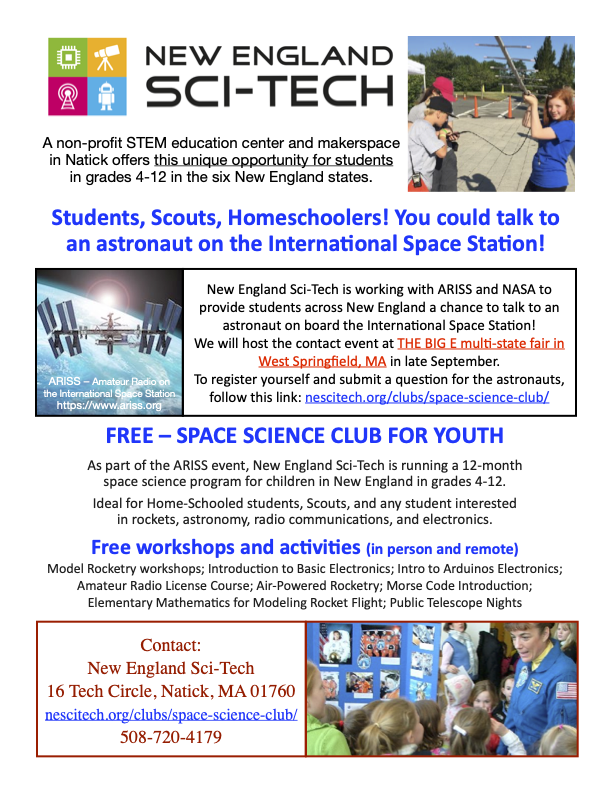
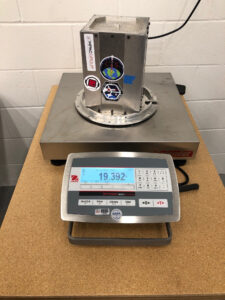
 Important Message from ARRL VEC
Important Message from ARRL VEC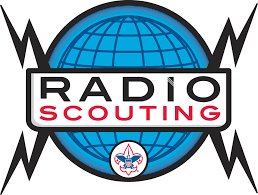 Mindy Hull, KM1NDY, writes in K1USN Happenings:
Mindy Hull, KM1NDY, writes in K1USN Happenings: